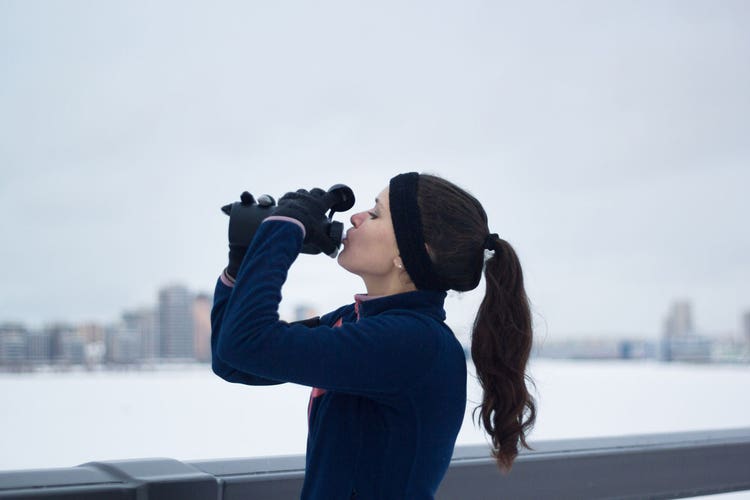Rethink Hydration This Winter

We have a complicated relationship with water. It makes up a significant amount of our cells. But making sure we drink enough can be a chore in the summer—and even more so in the winter. In fact, it turns out that cold temperatures put us at even higher risk for dehydration.
It doesn’t help that thirst tends to be a latent predictor of when hydration is needed—even when we lose more than 2 percent of our body mass. This makes maintaining fluid balance more difficult, and keeping the amount of electrolytes in various body fluids, such as blood and urine, within healthy ranges is essential to your body’s blood chemistry, muscle action and other processes. (Sodium, calcium, potassium, chlorine, phosphate and magnesium are all electrolytes.)
Add environmental temperature to the fluid-balance mix, and everything we thought we knew about hydration isn’t so clear. It turns out that winter, not summer, puts us at an increased risk of dehydration. When it’s cold, we lose water from breathing (there are water particles in our breath), and sweat evaporates quickly in cold, dry air—something that doesn’t happen when temperatures are warm.
Besides all this, cold alters our thirst sensation, according to research published in the journal Medicine & Science in Sports & Exercise. “People just don’t feel as thirsty when the weather is cold,” says lead researcher Robert Kenefick, Ph.D. “When they don’t feel thirsty, they don’t drink as much, and this can cause dehydration.”
How cold temperatures affect thirst

Thirst helps our bodies maintain fluid balance by making us drink something. Meanwhile, behind the scenes, our kidneys conserve or excrete water. Kenefick explains that fluid-regulating hormones such as plasma arginine vasopressin (AVP) mediates this process.
AVP is triggered by two factors that occur as our bodies lose water: an increase in sodium levels in the blood and a decrease in blood volume. When these two things happen, the brain—specifically the hypothalamus—secretes AVP to slow down the kidneys’ production of urine. At the same time, the hypothalamus sends signals to other parts of the brain to activate the sensation of thirst so we’ll drink something.
But in the cold, other factors come into play. According to Kendrick’s research, during exposure to cold temperatures, the body decreases blood flow to its periphery to decrease heat loss. So with the increase of blood in the body’s core, the brain doesn’t detect the blood volume decrease that would stimulate the release of AVP, even though sodium levels in the blood are rising. As a result, the thirst sensation is reduced up to 40 percent.
“It’s a trade-off—maintaining the body’s core temperature becomes more important than fluid balance,” Kenefick says. “Humans don’t naturally hydrate themselves properly, and they can become very dehydrated in cold weather because there is little physiological stimulus to drink.”
4 ways to stay hydrated during cold weather exercise

• Check your urine. Note the color and volume of your urine before and after activity. The American College of Sports Medicine suggests that if it is dark, low volume and infrequent, increase your fluid consumption. On the other hand, frequent and large volume of clear urine means that you’re hydrated.
• Drink fluids with meals. Milk, juice, tea, sports drinks and coffee will all serve the purpose of maintaining your fluid balance.
• Consume some sodium, whether in a sports drink or in salt-containing food. Either way, you’re helping your body retain fluids.
• Sip frequently while exercising. This is a simple way to maintain hydration levels— especially because cold temperatures can increase the amount of calories that you are burning and may cause your body to lose more fluids.
Dehydration symptoms

Not sure that your dehydrated? Here are some common symptoms:
- Irritability
- Headache
- Dark urine
- Constipation
- Cramping during exercise
- Fatigue
- Feeling dizzy
- Rapid heartbeat
- Rapid breathing
- Fainting
If you’re experiencing any of the above, drink something now.
Video credit: Supamotion, Shutterstock
Photo credit: Studio72, iStock; mavo, Shutterstock; dusanpetkovic, iStock; klebercordeiro, iStock